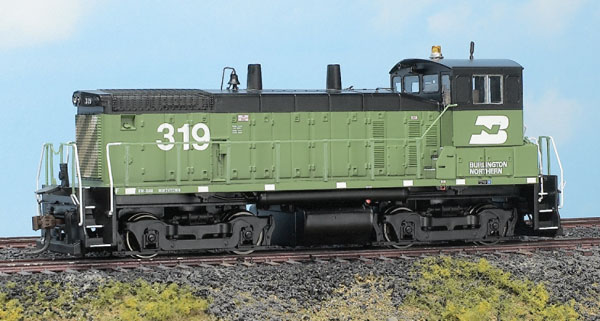
Athearn Trains HO scale SW1500 diesel locomotive An upgraded mechanism, railroad-specific details, and cab interior are just some of the upgrades on the Electro-Motive Division (EMD) SW1500 by Athearn. The HO scale model, originally released in 1991 as part of Athearn’s blue box line of locomotive and rolling stock kits, is now available as a […]
Read More…

Kato N scale Southern Pacific class GS-4 steam locomotive Price: $198 ManufacturerKato USA Inc.100 Remington Rd.Schaumburg, IL 60173katousa.com Era: 1941-1948Comments: During World War II, Southern Pacific painted its class GS-4 4-8-4 Northern locomotives, motive power for its iconic Daylight passenger streamliners, black to reduce their visibility to enemy bombers. Kato USA is now offering its […]
Read More…
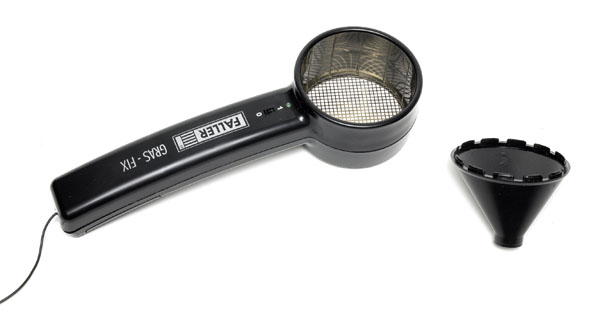
Faller Gras-Fix static grass applicator with funnel sifter Price: See your Faller dealer ManufacturerGebr. Faller GmbHKreuzstrasse 9D-78148 Gütenbach, Germanyfaller.de Comments: This handy tool for applying static grass is the latest offering from Faller. The Gras-Fix measures 91⁄2″ long and has a 3″ diameter grass hopper that’s 1-7/8″ deep. It also includes a funnel sifter for […]
Read More…
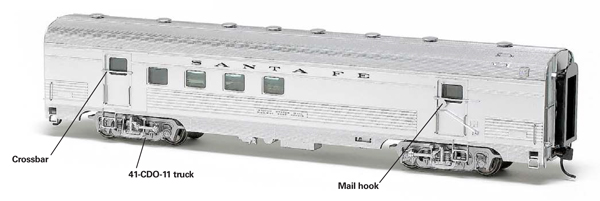
Walthers HO scale Santa Fe RPO The Atchison, Topeka & Santa Fe Ry. El Capitan is the next HO scale name passenger train offered by Walthers. This well-detailed Railway Post Office with a simulated stainless steel finish kicks off the series.The prototype. Railway Post Office (RPO) cars were a common sight on the head end […]
Read More…
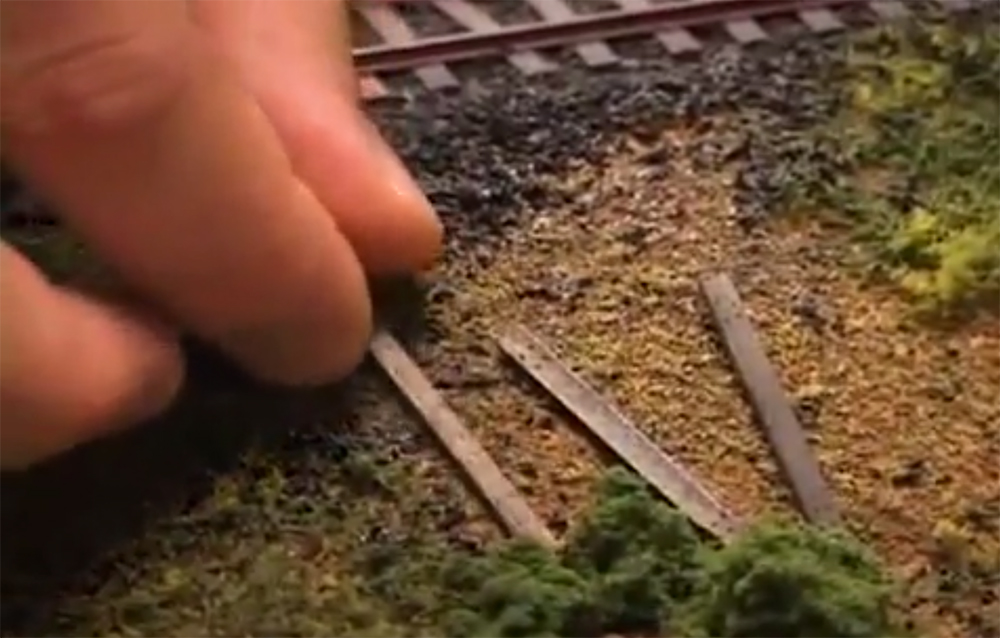
Having trouble viewing this video? Please visit our Video FAQ page Model Railroader associate editor Cody Grivno shows how to model discarded ties. […]
Read More…
FULL SCREEN Trains Magazine Collection Skiers disembark Boston & Maine’s Snow Train at North Conway, N.H. FULL SCREEN Trains Magazine collection Passengers enjoy their ride aboard the Boston & Maine Snow Train. FULL SCREEN John Gruber collection The front cover of Boston & Maine’s 36-page booklet advertising its 1940 season. FULL SCREEN John Gruber collection […]
Read More…
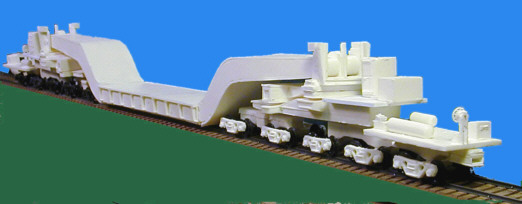
HO scale locomotives General Electric Dash 8-40C and 8-40CW diesel locomotives. New road numbers and paint schemes. Dash 8-40C: Canadian National (15th anniversary or modern paint schemes), Ferrocarriles Nationales de Mexico (three road numbers). Dash 8-40CW: BNSF (three new numbers); Conrail (“Quality” lettering), CSX (patched Conrail), Norfolk Southern, and Union Pacific (three new numbers). Two […]
Read More…
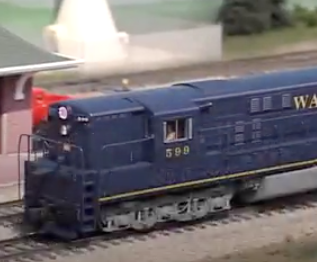
Watch this HO scale Fairbanks-Morse H-24-66 Train Master diesel from Atlas Model Railroad Co. run on the Model Railroader staff’s layout. This Gold Series model features a QSI Quantum Digital Command Control (DCC) sound decoder. […]
Read More…
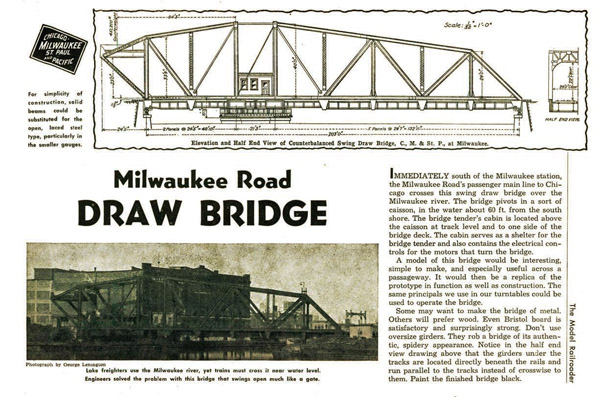
In the January 2012 Model Railroader, Jim Richards explains how he kitbashed a Walthers double-track swing bridge into an offset swing bridge. The prototype Milwaukee Road bridge Jim modeled first appeared in the July 1947 MR. […]
Read More…
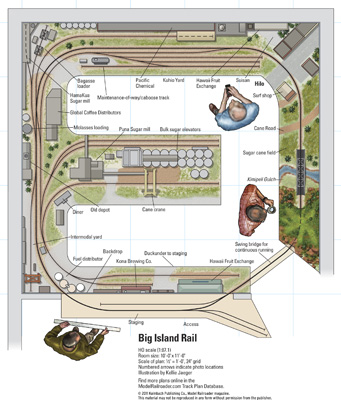
Name: Big Island Rail Corp. Layout designer: Joesph Kreiss Scale: HO (1:87.1) Size: 10 x 11 feet Prototype: Hawaii Consolidated Ry. Locale: Hawaii Era: present day Style: walk-in Minimum radius: 18″ Minimum turnout: no. 6 Maximum grade: 1 percent Originally appeared in the January 2012 issue of Model Railroader. Click on the link to download […]
Read More…
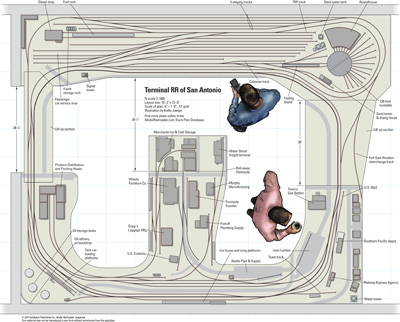
Name: Terminal RR of San Antonio Layout designer: Bill Carpenter Scale: N (1:160) Size: 10′-2″ x 13′-0″ Locale: downtown San Antonio Prototype: Southern Pacific and Texas & New Orleans Era: 1950s Style: walk-in, and around the walls with roll-away peninsula Minimum radius: 15″ Mainline run: 32 feet Minimum turnout: no. 5 Originally appeared in the […]
Read More…
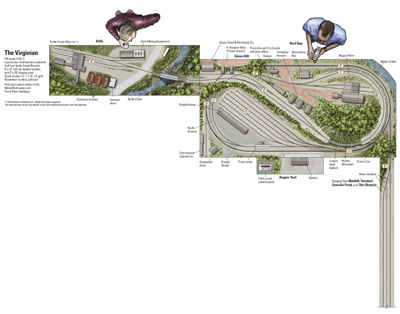
Name: The Virginian Layout designer: David Popp Scale: HO (1:87.1) Size: 4 x 8 feet, plus extensions Prototype: Virginian Ry. Locale: West Virginia Era: spring 1955 Style: island, portable Mainline run: 18 feet Minimum radius: 22″ (main), 18″ (branch) Minimum turnout: Atlas Snap-Switch Maximum grade: 3 percent Originally appeared in the January 2012 issue of […]
Read More…











